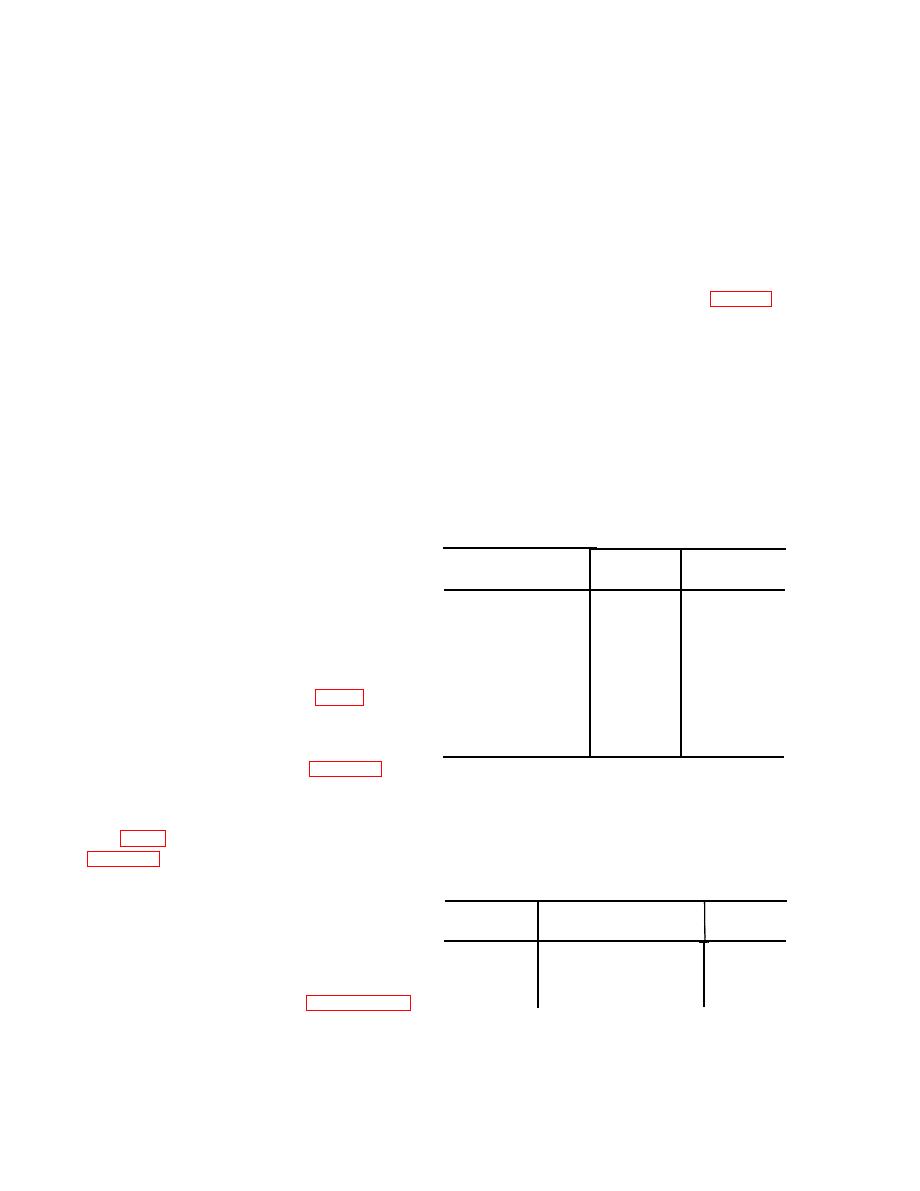 |
|||
|
|
|||
|
Page Title:
Shunt Method of Calibration Using Incoming Rf Signal |
|
||
| ||||||||||
|
|  plug (at the rear of the tuning unit)
a. Sign a 1 Pickup Device. T h i s b l o c k
d i a g r a m shows one of the three dipole
a n d mating jack J701 (on the in-
antennas connected, through the balanced-
t e r i o r wall of the main unit). The
t o - u n b a l a n c e d transformer (balun) and the
output signal drives audio amplifier
r e d color-coded rf cable, to the SIGNAL
V701 in the main unit. The ampli-
INPUT jack of the main unit. This color-
fied audio voltage produces an aural
coded rf cable is part of Electrical Cable
indication of modulated signals
A s s e m b l y Set MX-3410/URM-85. A sepa-
when one or two headsets are
rate and distinct dipole antenna is used to
p l u g g e d into PHONES jacks J702
c o v e r the full operating frequency ranges
and J703, respectively, on the main
of tuning units 2, 3, or 4. When tuning unit
unit front panel.
1 is in operation, either the loop or vertical
(2) Meter. The meter indication is de-
antenna must be used, and the test set is
r i v e d from meter detector V2 and
c a l i b r a t e d by the series method (para 5).
e l e c t r o m e t e r s V3-V4. The output
The other signal pickup devices which re-
f r o m electrometer V3 is coupled
quire shunt calibration of the meter depend
t h r o u g h terminal 8 of the tuning
on the method of coupling the signal to the
u n i t plug and the corresponding
input of the test set. They are used as de-
terminal of main unit jack J701 to
s c r i b e d below:
cathode follower V702 .4. The output
f r o m electrometer V4 is coupled
(1) F o r conductive measurements, the
t h r o u g h terminal 11 of the tuning
i n p u t from power or audio-signal
u n i t plug and the corresponding
lines under test is connected to the
terminal of main unit jack J701 to
t e s t set by special coupling net-
cathode follower V702B. These two
w o r k s . The following minor com-
c a t h o d e followers, t o g e t h e r with
p o n e n t s are used for conductive
m e t e r M701, make a bridge-type
measurements:
v a c u u m - t u b e voltmeter. The meter
employes a logarithmic 0- to 100-
Minor component
Nominal line
Frequency
m i c r o a m p e r e movement, and has
(common name)
range
two scales. One scale is calibrated
from -6 to +20-db; the second scale
50-ohm conductive cou- 50-150 ohms
150 kc to 30 mc
pler for tuning unit 1.
i s calibrated from 0 to 10 micro-
500-ohm conductive
150-500 ohms
150 kc to 30 mc
volt 1
coupler for tuning
f. Power Supply. The power supply pro-
Unit l.
50-ohm conductive cou- 50-150 ohms
20 to l,000 mc
vides seven different outputs for the
pler for tuning units
various circuits of the test set (fig. 1). The
2, 3, and 4.
i n p u t voltage required at the front-panel
500-ohm conductive
150-500 ohms
20 to 1,000 mc
coupler for tuning
POWER receptacle J721 is 115 volts, 50-
units 2, 3, and 4.
t o 400-cps. A complete block diagram of
the power supply is shown in figure 5.
(2) For pinpointing the source of rf
4. Shunt Method of Calibration Using
n o i s e interference from an instru-
Incoming Rf Signal
ment u h d e r test, the inductive
m e t h o d of coupling is used. The
f o l l o w i n g minor components are
d e t a i l e d operation of the equipment after
u s e d for inductive measurements:
the meter has been calibrated to produce a
full-scale deflection by using the output of
Minor component
Frequency
Characteristic
the impulse generator as a calibrating
(common name)
range
signal source. Setting the front-panel cali-
Magnetic field
Localizes magnetic field 150 kc-30
bration switch to the SERIES CAL& OPER-
components of rf energy
mc.
probe for
A T E position changes the circuit connec-
over the frequency
tuning unit 1.
range of tuning unit l.
tions from those described in paragraph 3.
6
|
|
Privacy Statement - Press Release - Copyright Information. - Contact Us |